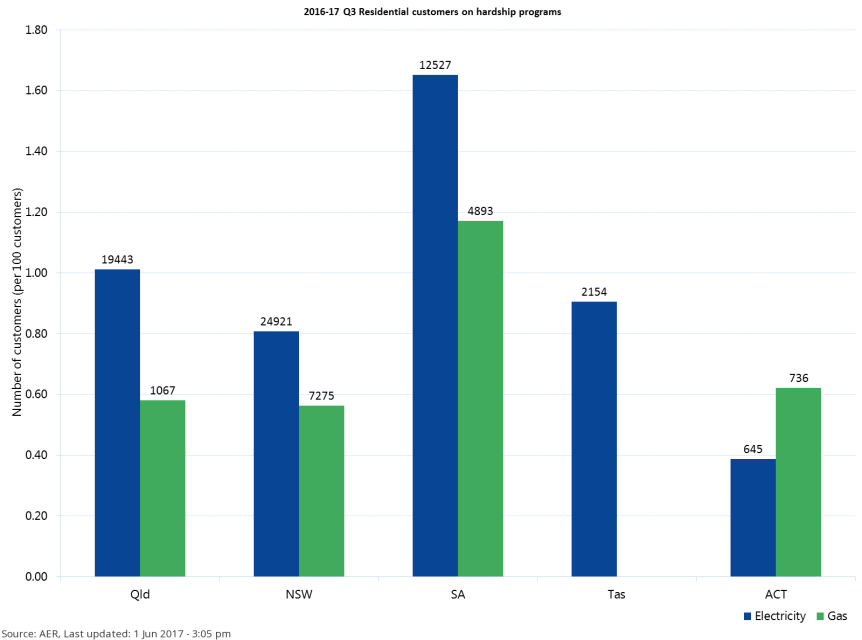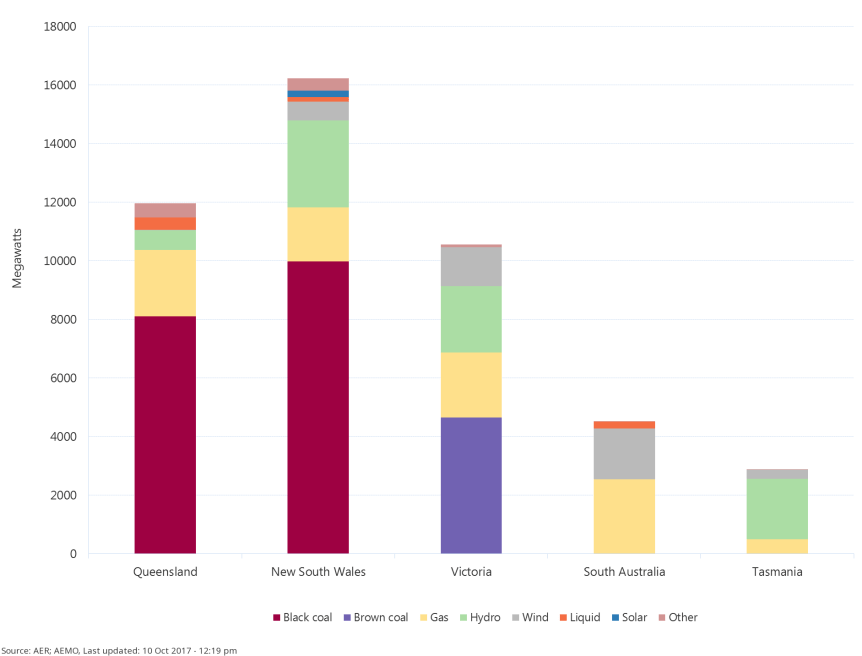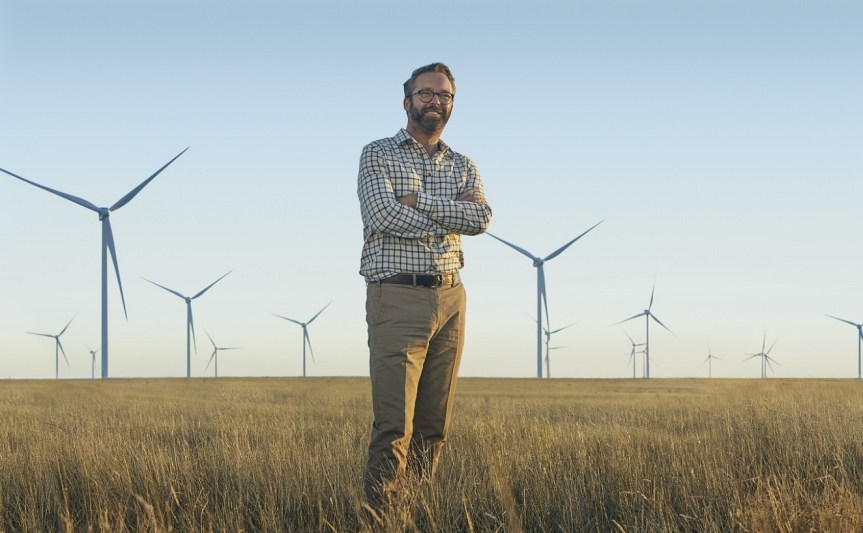Worshipping windmills and posing prostrate before panels is a fast track towards being regarded by one’s peers as the King or Queen of the Virtue Signallers.
Moral posturing begins with an appropriately preened identity, which can be paraded in front of all, provided that it’s PC perfect.
Hence, the use of a motley bearded, hipster git from Melbourne as the centre-piece of AGL’s “we’re getting out of coal” propaganda program. Having him look wistfully into the distance with Macarthur’s whirling wonders in the background is about as virtuous as it gets, in hipster circles.
However, all that PC piety tends to ignore the effect that the insane cost of subsidised wind and solar (and the effect that their chaotic intermittency has on power prices, overall) has on the bottom of the socio-economic order.
To the poorest and most vulnerable, power prices really do matter. Here’s Jo Nova on what it means to struggle to pay a power bill.
In Australia, even some people with jobs are struggling to pay bills and put food on the table
Jo Nova Blog
Jo Nova
16 October 2017
The Foodbank press release: Financial stress pushing millions of Australians into food insecurity.
One in six or, 15% of the Australian population, apparently has experienced “uncertainty” around food in the last 12 months. For some, that’s only one episode in a year but still, in a first world country which is a major food exporter, it’s not a sign of wealth and good times. If the survey is to be believed, fully 9% of Australians are experiencing a food shortage every month or even more often. Surprisingly, half of those experiencing food uncertainty have jobs – working serfs. Foodbank blames it on living costs — like rent and power bills.
A nation in decline: A ten percent increase in people seeking food relief across the nation
One thing is sure “bill shock” is hurting people, and it’s getting worse:
Foodbank provides food for over 652,000 people a month, however, the front-line charities report that demand for food relief has increased by 10% in the last year and they are forced to turn away 65,000 people every month due to lack of food.
How much does renewable energy contribute? Hard to say — all the factors are confounded and feedbacks flow like spaghetti.
Adding unreliable energy adds hidden costs in managing wild swings in supply, and lack of spinning inertia. We have to have back up storage that we didn’t need before, so add batteries, battery subsidies, hydro storage, and also the inefficiencies for coal generators — which are cheapest and most efficient at constant supply. Then, add the cost of electricity into the cost of all products, so supermarket bills go up. The intermittent generators make us more dependent on gas, and that extra demand pushes up the price of gas too.
Higher costs of living mean higher wage claims. Then the extra prices of everything (electricity, food, salaries) force companies out of business or offshore. Because it’s energy we are messing with, the flow-on implications touch everything.
The 10% increase in people seeking food relief applied across all Australian states. But South Australia started from a higher baseline. The Australian Energy Regulator (AER) data shows that the proportion of residential electricity and gas customers on hardship programs in South Australia is twice as high as other states.
But I spoke to a well connected, influential South Australian last week and he tells me people there love renewables — they think they are cheap. We need to tally up the hidden costs.

This graph shows the total electricity generation capacity in each state and it’s breakdown by generation type. Remember, those grey bars are the capacity of “wind power” but the generation from wind sources is only one third or thereabouts of the total “capacity”.
All the states below are connected to the one NEM electrical grid. SA has more renewables than the other states, but this is electricity-sans-borders to some extent. Pain and problems in one state can flow into the grid. Though according to foodbank, the number seeking help has also gone up by the same amount in WA which is not connected to the NEM. A messy problem. The only thing we know for sure is that when we had hardly any renewables, we had cheaper electricity.

For completeness: those unemployment statistics:

The end of the mining boom in WA increased the unemployment rate and may also explain the increase in hardship cases and unpaid bills.
In South Australia the Advertiser picked up the issue. Read more from Eric Worrall at WattsUp and Scott of the Pacific.
MORE than 102,000 South Australians seek help from food charity Foodbank every month, as parents skip meals for days on end so children can eat and utility bills can be paid, astonishing figures show.
Foodbank SA chief executive Greg Pattinson said the high number of those needing assistance was staggering, but not surprising, because more and more SA families were being forced to make the heartbreaking decision to either “heat or eat”.
“We’ve heard it from so many people; the power bills come in and they have to decide: ‘Do we feed the kids today or do we not?’” he said.
Adelaide Now. (Paywalled)
The Foodbank 2017 report (PDF)
As as aside — one Foodbank recipient, Steve in Melbourne, wondering why the media is talking about Trump instead of about hungry Australians:
I’ve worked voluntarily for the Uniting Church and The Salvos so I’ve got a lot of food parcels from them and obviously I want to put back in as well. There’s more on our news about Donald Trump and what he’s doing in America than there is about hungry people in Australia. How is that even in the hemisphere of right? That just doesn’t make sense.”
The media are part of the problem. The deplorables are the ones going hungry.
Jo Nova Blog



there is a sad irony for Australia and Australians in a country whose Agri-Food industry is on a seven year high (thanks mainly to high CO2) and their own people can not adequately feed them selves
Click to access trade-report-17.pdf
We would go beyond ‘sad irony’ and call it culpable: this is a crime against the poor and the vulnerable, because the green-left know exactly what they are doing, and why.
agree
At least AGL got the git right. We, the suffering neighbours, dont count. Was woken half a dozen times in September at 2 to 3 am. It makes your next day like you are jetlagged. Very dangerous when you are a sole operator and we are 11 kms to the south of AGL’s Macarthur turbines.
Reliable, affordable and safe energy is the highest imperative for a successful democratic country.
At a global level, once enough people have realized that what is being called ‘the greatest fraud in scientific history’ has resulted in the misallocation of critical energy sources, leaving billions of people impoverished and in misery, condemned to lives of desperation and disease, the demand for criminal trials will rise rapidly. It’s time to identify key players and the roles they played.
This has not been done by people who truly are environmentally concerned. Look at the lifestyles of those who have made these decisions.
Just what does this tell us about the politicians and bureaucrats and academics in this country that are supposed to represent us? Yes, they hate the hand that feeds them because we are dirty and unclean and it’s better we are starved to death then have a voice. Every day the ‘revolution’ that is building in our hearts and minds gets closer to exploding in their faces – bring it on.
In the 1970’s, increases in the price of oil led to “stagflation,” a stagnant economy with high unemployment coupled with inflation. Back then, the problem was OPEC tripling the price of oil every 6 years or so. Today we are witnessing the same thing with renewables such as wind and solar raising the price of electricity, making people spend more money on power bills and leaving less money for other items while increasing their costs of production. History repeats itself, only this time the wounds are self-inflicted due to a misguided ideology that somehow inferior sources of power are going to save the world. Unlike wind and solar, nuclear has demonstrated its ability to provide reliable electricity at an affordable price and thus maintain a decent standard of living in countries such as France and Sweden. Nuclear, anyone?
Count STT in. Nuclear makes perfect sense.